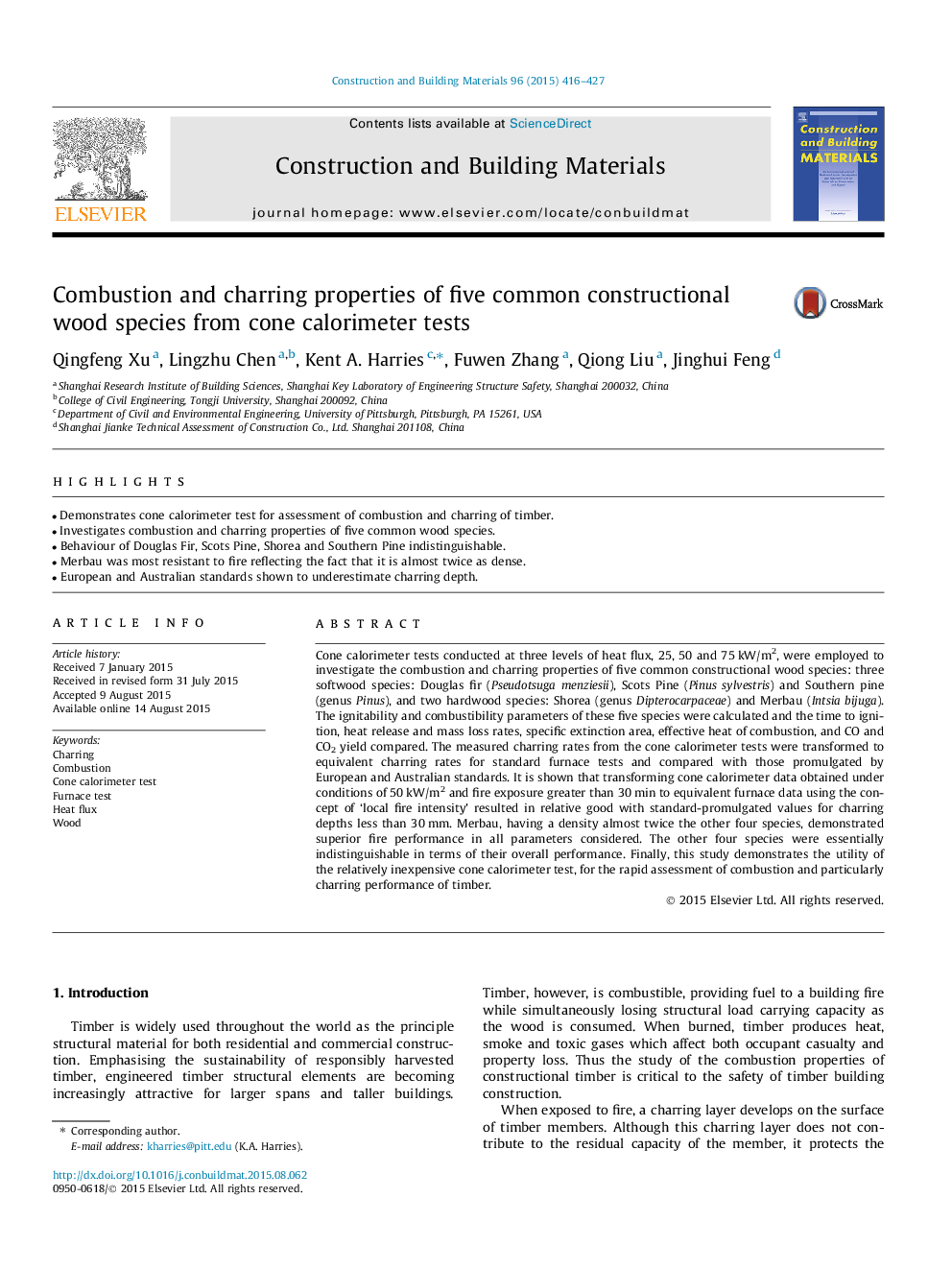| Article ID | Journal | Published Year | Pages | File Type |
|---|---|---|---|---|
| 256722 | Construction and Building Materials | 2015 | 12 Pages |
•Demonstrates cone calorimeter test for assessment of combustion and charring of timber.•Investigates combustion and charring properties of five common wood species.•Behaviour of Douglas Fir, Scots Pine, Shorea and Southern Pine indistinguishable.•Merbau was most resistant to fire reflecting the fact that it is almost twice as dense.•European and Australian standards shown to underestimate charring depth.
Cone calorimeter tests conducted at three levels of heat flux, 25, 50 and 75 kW/m2, were employed to investigate the combustion and charring properties of five common constructional wood species: three softwood species: Douglas fir (Pseudotsuga menziesii), Scots Pine (Pinus sylvestris) and Southern pine (genus Pinus), and two hardwood species: Shorea (genus Dipterocarpaceae) and Merbau (Intsia bijuga). The ignitability and combustibility parameters of these five species were calculated and the time to ignition, heat release and mass loss rates, specific extinction area, effective heat of combustion, and CO and CO2 yield compared. The measured charring rates from the cone calorimeter tests were transformed to equivalent charring rates for standard furnace tests and compared with those promulgated by European and Australian standards. It is shown that transforming cone calorimeter data obtained under conditions of 50 kW/m2 and fire exposure greater than 30 min to equivalent furnace data using the concept of ‘local fire intensity’ resulted in relative good with standard-promulgated values for charring depths less than 30 mm. Merbau, having a density almost twice the other four species, demonstrated superior fire performance in all parameters considered. The other four species were essentially indistinguishable in terms of their overall performance. Finally, this study demonstrates the utility of the relatively inexpensive cone calorimeter test, for the rapid assessment of combustion and particularly charring performance of timber.
